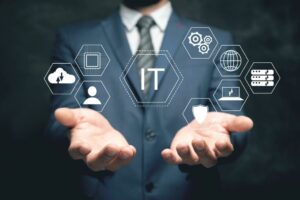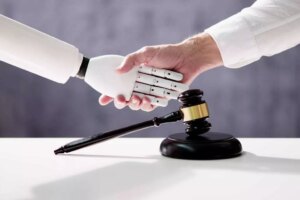It can drastically reduce downtime, open up new business models, and improve customer experience—and it can also make organizations more resilient. In the COVID-19 era, for example, digital management tools and constant connectivity allowed some companies to react to market changes swiftly and efficiently by quickly adjusting production capacity and simultaneously supporting remote operations. IIoT Platforms let you develop applications for your unique improvements and challenges. These applications can connect to your sensors and devices, collect data on the human and machine elements of processes, and eliminate the most common sources of error on the shop floor. Smart utilities and even smart cities could allow societies to use energy resources and transportation systems more effectively and at a lower cost than in the past. Although no one can predict the exact course that these connected technologies will take, and the challenges and social concerns they may spur, it is clear that the IoT will continue to have a profound impact on lives and culture in the years ahead.

Motion sensors detect movement by monitoring ultrasonic waves and triggering a desired action when those waves are interrupted. When operational, IoT devices create and gather data, and then AI analyzes it to provide insights and improve efficiency and productivity. Ambient intelligence and autonomous control are not part of the original concept of the Internet of things. Ambient intelligence and autonomous control do not necessarily require Internet structures, either.
Company
In 2023, billions of internet-connected devices collect and share data for consumer and industry use. IoT has been an important aspect in the creation of digital twins — which is a virtual representation of a real-world entity or process. An IoT platform provides businesses with data they need to transition with confidence. It helps organizations build bridges with their customers through recurring services for remote monitoring, more smart field services, and performance management, all to improve the customer experience. On one end, thin edge is defined by an architecture where data from devices are collected and transmitted for centralized processing.
AWS IoT includes services like security, data encryption, and access control to device data. It is built on secure and proven cloud infrastructure and IoT networks and scales to billions of devices and trillions of messages. AWS IoT also integrates with https://www.globalcloudteam.com/ other AWS services so you can create complete solutions. At a high level, IoT platforms provide a head start in building IoT systems by providing built-in tools and capabilities to make IoT easier and cheaper for businesses, developers, and users.
How the Internet of Things works
With cloud-based IoT applications, business users can quickly enhance existing processes for supply chains, customer service, human resources, and financial services. By means of low-cost computing, the cloud, big data, analytics, and mobile technologies, physical things can share and collect data with minimal human intervention. In this hyperconnected world, digital systems can record, monitor, and adjust each interaction between connected things. An IoT platform allows you to manage the lifecycle of IoT devices iot platform vendors and sensors—from planning and onboarding, monitoring and maintenance, through to retirement—remotely from a centralized location. Robust device lifecycle management processes are often neglected in early-stage IoT projects, when the focus is on building and launching a solution, but they are fundamental to scale a rollout and maintain reliable performance. DataFlow, a cloud-based AT&T managed solution development platform, will allow for remote connections and management of all objects and devices.
- At the same time, sophisticated sensors appeared that could measure motion, temperature, moisture levels, wind direction, sound, light, images, vibrations, and numerous other conditions—along with the ability to pinpoint a person or a device through geolocation.
- Enhance your application performance monitoring to provide the context you need to resolve incidents faster.
- Your IoT device needs to be online, and this platform of IoT allows to set all networking configurations for the device.
- Employees in hazardous environments such as mines, oil and gas fields, and chemical and power plants, for example, need to know about the occurrence of a hazardous event that might affect them.
- The primary goal of the IoT is to create self-reporting devices that can communicate with each other (and users) in real time.
- The connected car allows car manufacturers or dealers to turn the car ownership model on its head.
It’s a single, integrated cloud-based platform that uses AI, IoT and analytics to optimize performance, extend asset lifecycles and reduce operational downtime and costs. Intelligent asset management, monitoring, predictive maintenance and reliability in a single platform. Consumer IoT refers to personal and wearable devices that connect to the internet. AI is the simulation of human intelligence processes by machines, especially computer systems, and is typically used in natural language processing, speech recognition and machine vision.
What are IoT platforms?
For organizations that run remote assets, it is also important to many customers for an IoT platform to support edge computing. As IoT-enabled services become an increasingly important part of how organizations serve their customers, delivering IoT at scale can be a challenge. The approach that works for an initial proof-of-concept connecting a handful of machines may not scale properly—for example, it’s common for system management to become a drain on innovation, or to find that costs spiral out of control with thousands of deployments. The future of IoT is exciting, with many new developments and innovations on the horizon, with providers of devices offering attractive pricing, as the cost of IoT device production declines.
Learn the prerequisites and best practices for a successful IoT installation. The GS1 digital link standard,[197] first released in August 2018, allows the use QR Codes, GS1 Datamatrix, RFID and NFC to enable various types of business-to-business, as well as business-to-consumers interactions. They look at the IoT platform and trust they’re getting the complete solution they need—then realize the mistake six months into development. Maybe these platforms for IoT may sound a little confusing, in fact, there are a lot of them that offer mixed functionalities for the sake of setting up the IoT ecosystem.
Which is more critical—your time or your money.
The ability to remotely monitor machines is also enabling new product-as-a-service business models, where customers no longer need to buy a product but instead pay for its usage. IoT is also a natural extension of supervisory control and data acquisition (SCADA), a category of software application programs for process control, the gathering of data in real time from remote locations to control equipment and conditions. The hardware gathers and feeds data into a desktop computer that has SCADA software installed, where it’s then processed and presented in a timely manner. Wearable devices with sensors and software can collect and analyze user data, sending messages to other technologies about the users with the aim of making users’ lives easier and more comfortable. Wearable devices are also used for public safety — for example, by improving first responders’ response times during emergencies by providing optimized routes to a location or by tracking construction workers’ or firefighters’ vital signs at life-threatening sites. In addition to offering smart devices to automate homes, IoT is essential to business.

Smart buildings can, for instance, reduce energy costs using sensors that detect how many occupants are in a room. The temperature can adjust automatically — for example, turning the air conditioner on if sensors detect a conference room is full or turning the heat down if everyone in the office has gone home. Consumers, for example, can use IoT-embedded devices — such as cars, smartwatches or thermostats — to improve their lives. For example, when a person arrives home, their car could communicate with the garage to open the door; their thermostat could adjust to a preset temperature; and their lighting could be set to a lower intensity and color. Increasingly, organizations in a variety of industries are using IoT to operate more efficiently, deliver enhanced customer service, improve decision-making and increase the value of the business. That’s why security is built into the Cumulocity IoT software development process, woven into every line of code.
IoT Device Management Platforms
Further, IIoT platforms make it possible for different for operation machines to communicate with other machines (also known as Machine to Machine or M2M communication). In fact, they can encompass a huge variety of hardware and software features. Fundamentally, IIoT Platforms are tools for improving connectivity, control, and data analysis in industrial environments. Machines can be continuously monitored and analyzed to make sure they are performing within required tolerances. Products can also be monitored in real time to identify and address quality defects. The physical connections between the entity and its twin are most often IoT sensors, and a well-configured IoT implementation is often a prerequisite for digital twins.
If you already know the importance of IoT, you are probably working on developing a new project related to the internet of things. And it is crucial to understand that an IoT device requires specific IoT platforms to work properly. Whether you’re an engineer, a plant manager, a machinist, or an executive, platforms have concrete benefits. You’ve probably heard the phrase “data is the new oil.” That’s because data is quickly becoming the most valuable good on the planet. Platforms collect data automatically, making a new level of visibility and insights possible.
When should your business use an IoT platform?
At a high level, an Internet of Things (IoT) platform is the support software that connects edge hardware, access points, and data networks to other parts of the value chain (which are generally the end-user applications). IoT platforms typically handle ongoing management tasks and data visualization, which allow users to automate their environment. You can think of these platforms as the middleman between the data collected at the edge and the user-facing SaaS or mobile application. IoT applications allow retail companies to manage inventory, improve customer experience, optimize supply chain, and reduce operational costs. For example, smart shelves fitted with weight sensors can collect RFID-based information and send the data to the IoT platform to automatically monitor inventory and trigger alerts if items are running low.


